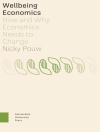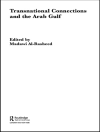Researching the Public Opinion Environment informs the reader on the rationale, purposes, theories, and methodologies involved in researching publics. The book is divided into four parts. Part one looks at theories and systems relevant to opinion research. Part two addresses the topics of monitoring and analyzing the media. Part three describes the basics of survey research, focus groups, Delphi techniques, stakeholder assemblies, and Q methodology. And finally, part four analyzes the impact of the media.
Although a number of books have been written on public opinion, few address both theoretical and methodological issues. Graphs, tables, and sample analysis help the reader to understand applications described in the book. The material discussed in this book has numerous applications. Communicators can apply information acquired on key publics to plan and evaluate campaigns, track the extent to which messages have appeared in the media, assess organizational image, develop marketing strategies, and manage their issues. Students will learn an important job function for added credibility when they apply for jobs.
Table des matières
PART ONE: THEORY AND SYSTEMS
Role of Public Opinion in Democratic Societies
Establishing Intelligence Systems to Capture Public Opinion
PART TWO: MONITORING AND ANALYZING THE MEDIA
Monitoring the Media
Asking Questions
Content Analysis Techniques
PART THREE: RESEARCH METHODOLOGIES
Survey Design and Sampling
Survey Development
Survey Administration
Focus Groups, Delphi Techniques, Stakeholder Assemblies and Q Methodology
PART FOUR: THEORIES ON IMPACT OF THE MEDIA
Academic Debate over Media Effects
The Effects Continuum












